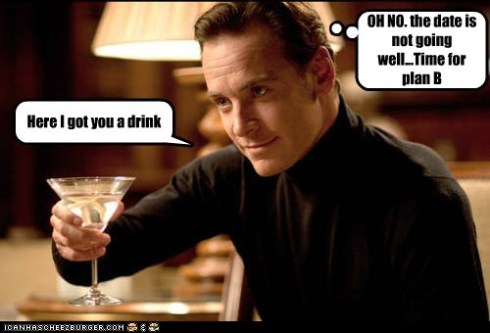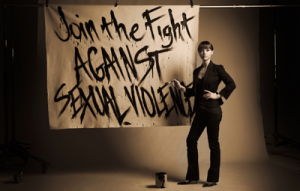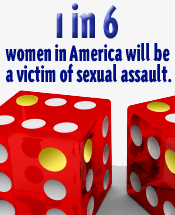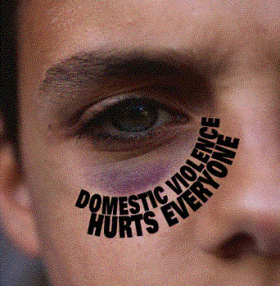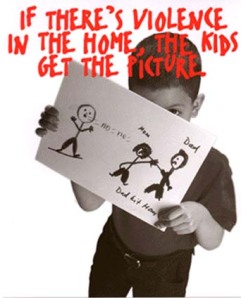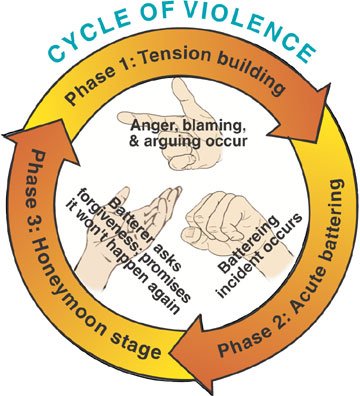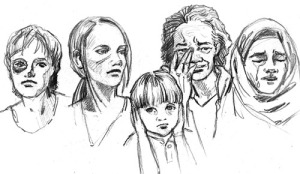 Whether it comes in the form of emotional, financial, physical, or sexual abuse, a significant portion of women in the United States face violence everyday. Violence, and the fight against it, may be the one unifying factor women across all sectors have in common other than their sex. Race, class, age, sexuality, gender identity, and ability all affect the type of violence women experience but none of these factors protect women from violence.
Whether it comes in the form of emotional, financial, physical, or sexual abuse, a significant portion of women in the United States face violence everyday. Violence, and the fight against it, may be the one unifying factor women across all sectors have in common other than their sex. Race, class, age, sexuality, gender identity, and ability all affect the type of violence women experience but none of these factors protect women from violence.

“Violence in the name of power, conquest, dominance, and submission are the cornerstones of”[1] the hierarchy of patriarchy in the U.S. Perhaps the most disturbing fact about violence against women in the United States is that most women are hurt by someone known to them, and the most dangerous place for women is a private home.
Luckily, help is available for victims of violence. “On September 15, 2009, 1,648 out of 1,980, or 83%, of identified local domestic violence programs in the United States and territories participated in the 2009 National Census of Domestic Violence Services,” conducted annually by the National Network to End Domestic Violence (NNEDV).[2]
This survey[3] found that 65,321 victims, (41,097 adults and 24,224 children) were served and 9,280 needs were unmet due to lack of resources and/or funding in one day. On that day four women were killed by their intimate partners and seven children were killed by their fathers.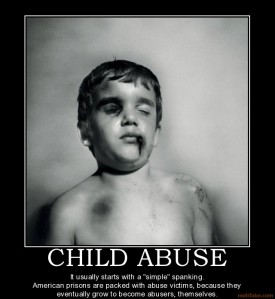
Although the survey did not take into account how many men or women were served or what age group victims generally fell in–confidentiality issues can take precedence over sex- and age-disaggregated data–one in nine men and one in four women will be victims of domestic violence at some point in their lives.[4] Sixty per cent of unmet requests “were from victims seeking emergency shelter or transitional housing.” Insufficient funding for needed programs and services was cited by 40 percent of program respondents as a reason they were unable to provide services while “limited funding for translators, bilingual staff, or accessible equipment,” was cited by 11 percent of programs. In Texas alone, with 87% of shelters reporting, 2,988 adults and 2,443 children were served while 784 requests for services were unmet.[5]
Figures for the most underreported violent crimes–sexual assault and rape–are equally disturbing. The Rape, Abuse & Incest National Network (RAINN) estimates that one of every six women in the United States will be a victim of sexual assault in her lifetime.[6] Sixty percent of these crimes are not reported to the police. Domestic violence is also underreported.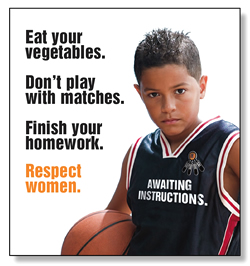
“Language barriers, distrust of authorities, and fears of the legal system can deter reporting. Many immigrant women are reluctant to report domestic violence to authorities out of fear that they would be deported. Non-English speakers, migrant workers, or victims with disabilities may face specific obstacles in reporting….
“Traditional expectations in some cultures that demand silent subservience of women make it harder for battered women to report the abuse and deprive those women of community support. In traditional Navajo culture, for example, ‘peacemakers’ who informally adjudicate claims of battering may try to restore harmony by encouraging women to remain in abusive relationships.
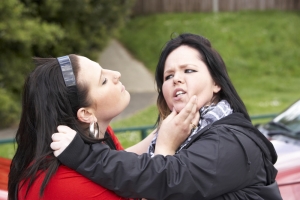 “Lesbians and gay men may be reluctant to report intimate violence to avoid disclosing their sexual orientation, or they may fear police hostility. If gay men or lesbians use physical force to defend themselves from their battering partners, police may assume that two men wrestling is a ‘fair fight’ or think that two women struggling is a catfight or quarrel. If lesbians who are battered by their partner seek refuge at a shelter, their partners, who are also women, can gain access to them.”[7]
“Lesbians and gay men may be reluctant to report intimate violence to avoid disclosing their sexual orientation, or they may fear police hostility. If gay men or lesbians use physical force to defend themselves from their battering partners, police may assume that two men wrestling is a ‘fair fight’ or think that two women struggling is a catfight or quarrel. If lesbians who are battered by their partner seek refuge at a shelter, their partners, who are also women, can gain access to them.”[7]
The result of underreporting and a judicial system entrenched in patriarchy is that on average three women are killed every day by an intimate partner[8] and only about six percent of rapists ever spend a day in jail.[9]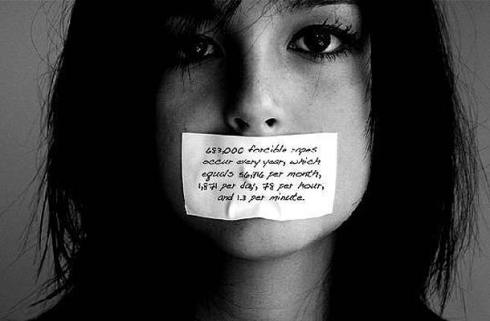
“Women are still being criticized for what they were wearing at the time of the rape and where they were when it occurred, and questioned why they were there in the first place–all of which would be unthinkable if the crime was, say, a mugging. As law professor Taunya Lovell Banks says, ‘No one ever questions if a person consents to other types of assault. Nonsexual victims don’t have to say “I didn’t consent to be hit with that crowbar.”‘”[10]

In 2008 the Federal Bureau of Investigation reports that 89,000 “forcible rapes” took place[11] while only 22,584 arrests were made for “forcible rape.”[12] The Center for Disease Control found that in 2007 sexual assault was the leading cause of nonfatal violence-related injuries for females age one to nine years old, while for all other age groups of females, including those younger than one year old, “other assault, struck by/against” was the leading cause of injury. Much of the physical violence in the report can be attributed to domestic violence and child abuse.

Sexual assault was the second most frequent cause of nonfatal violence-related injury for females under one year of age and those aged 10-14. It was also the number three ranking cause of injury overall and for women ages 15-34.[13] Citing the U.S. Department of Justice and the National Institute of Justice & Centers for Disease Control and Prevention, RAINN found that 90 percent of rape victims are female, and while white people make up 80 percent of all sexual assault victims, minorities are more likely to be attacked.
The lifetime rate of rape or attempted rate is highest for Native American women, at 34.1 percent. In America 24.4 percent of mixed raced women, 18.8 percent of black women, 17.7 percent of white women and six-point-eight percent of Asian women will be victims of sexual assault. Also, 80 percent of sexual assault and rape victims are under age 30 while a staggering 15 percent of sexual assault and rape victims are under age 12, and girls 16-19 are four “times more likely than the general population to be victims of rape, attempted rape or sexual assault.”[14]
Violence and abuse towards children is rampant in the U.S. but is even more common towards disabled people and is compounded by other identity factors. “‘Special ed’ classrooms have been, and still are in some school districts, a dumping ground for poor kids, kids of color, particularly those who don’t speak English, and kids with a variety of disabilities, all of whom learn more slowly or differently than kids in ‘regular’ classrooms.”
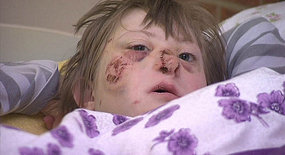
Thus, while most children, like most adult victims of sexual assault or familial violence, keep quiet, disabled children and adults are even more likely not to report abuse. Abuse has become institutionalized as “women still are being abused in some mental hospitals. In some cases, other patients and hospital staff have abused the women, and no one believes them because they are labeled mentally ill.”[15] One woman explains why disabled people are chosen as targets of abuse:
“There are the ones who are chosen because they cannot speak of the horror. There are the ones who are chosen because they cannot run away, and there is nowhere to run. There are the ones who are chosen because their very lives depend on not fighting back. There are the ones who are chosen because there is no one for them to tell. There are the ones who are chosen because no one has even taught them the words. There are the ones who are chosen because society chooses to believe that, after all, they don’t really have any sexuality, so it can’t hurt them.”[16]
Disabled people, especially those with mental illness or developmental disabilities, are often seen as being unaware of their surroundings and therefore treated as subhuman, creating an environment in which abuse against them is more normalized. One author found that “abuse is the rule, rather than the exception, in the experience of disabled people.”[17]

Forced sterilization and sadistic medical experiments still take place on individuals with developmental disabilities.[18] Other groups that have battled for their right to bodily integrity and against forced sterilization include Native American and Latina women and women in the prison system, especially drug addicts. Native American boarding schools, the prison system, and retirement homes are also infamous for their high rates of institutionalized violence. Elder abuse is one more example of violence that often goes unreported due to fear and unpunished due to lack of concern.
Fortunately, numerous avenues have opened up to fight sexual and domestic violence in the past 40 years, largely thanks to the women’s movement of the 1970s. From recognition of the existence of marital rape to the passage of the Violence Against Women Act (VAWA) in 1994, 2000, and 2005, women who are victims of violence now have more recourse to seek justice. There are also a considerable number of programs aimed at raising awareness of and preventing violence against women.
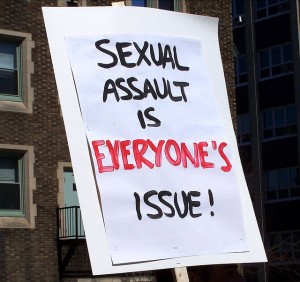
In addition to RAINN and NNEDV, Take Back the Night,[19] The Vagina Monologues/V-Day Movement,[20] The National Domestic Violence Hotline,[21] The National Sexual Assault Hotline,[22] and INCITE! Women of Color Against Violence[23]–co-founded by Cherokee activist Andrea Smith, are all non-governmental organizations whose work fights to prevent violence and help those who have suffered recover.
The United States government has also joined in the fight; in addition to VAWA, the federal government also operates the Office on Violence Against Women under the Department of Justice,[24] and includes resources for victims of violence through the Office of Women’s Health under the Department of Health & Human Services.[25]
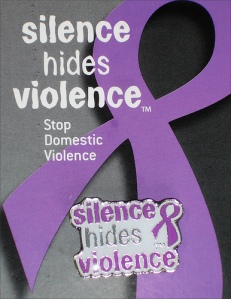
Also, every state and U.S. territory has at least one organization dedicated to victims of violence, most of which provide shelter services in emergencies. Alaska, Idaho, Kansas, Michigan, Missouri, Montana, Nebraska, North Dakota, Oklahoma, Oregon, South Carolina, Tennessee, Vermont, the Virgin Islands, Virginia, and Wyoming all have one statewide organization that addresses the needs of victims of sexual and domestic violence. All other states and Washington, D.C., Puerto Rico, and Guam have at least one organization to address domestic violence and one to address sexual assault and rape.[26][27]
Many large cities throughout the U.S. also have local shelters and organizations to deal with high rates of violence. The presence of so many organizations working to prevent violence against women has helped; the annual number of reported rapes, sexual assaults, incidents of domestic violence, and intimate partner homicide have all fallen in the past 20 years, but, there is still much work to be done before patriarchy stops using violence to try to control women.
[1] Rowland, Debran. 2004. The Boundaries of Her Body: The Troubling History of Women’s Rights in America. Sphinx Publishing: Naperville, IL.g
[3] See the full 2009 report in Appendix 4.
[5] National Network to End Domestic Violence, 2009.
[7] Levit, Nancy and Robert R. M. Verchick. 2006. Feminist Legal Theory. New York University Press: New York.
[10] Dusky, Lorraine. 1996. Still Unequal: The Shameful Truth About Women and Justice in America. Crown Publishers, Inc.: New York.
[15] Brownworth and Raffo, 1999.
Related Articles
- Day 20- RAINN & NDVH (feministactivism.wordpress.com)
- Day 16- Denim Day Movement (feministactivism.wordpress.com)
